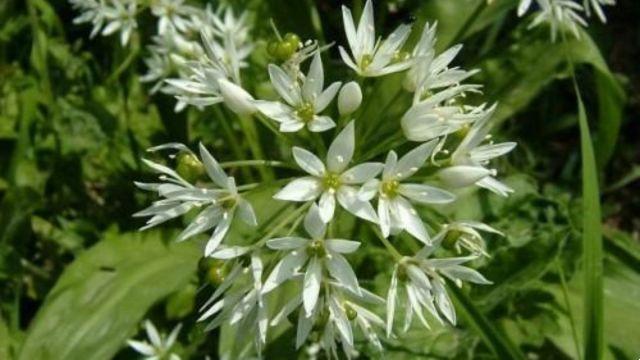
Despite its name, bear's garlic, scientific name Allium ursinum, is a close relative of chives, we could say its wild cousin, and how it belongs to the genus Allium of the Liliaceae family.
The vulgar name, which follows the scientific one, is due to the fact that its smell strongly recalls that of garlic, as well as the taste, slightly less pronounced, and which is one of the favorite foods of brown bears, who love, together with wild boars, to dig holes to taste the bulbs.
Wild garlic: which parts to use
It is a typical European Liliacea, distributed from the British Isles to the Caucasus and Central Asia via the Mediterranean, including Turkey. The first evidence of its consumption by humans dates back to the Mesolithic, in Denmark, where it still grows conspicuously in the woods today.
In addition to the interesting bulb, the leaves are consumed, such as salad herbs or vegetables for cooking; the stem, how chives or a bed of garlic would be used; and even the inflorescences, with a pleasant scent, with which you can dress salads, flavor oil or cheeses during their aging.
Beware of poisonous plants
From March to June, that is all spring represents the ideal time for its harvest and for its use. However you have to be careful for its resemblance to poisonous plants which every year are the cause of cases of intoxication. One of these is lily of the valley, which however has a completely different flower; another is, in rarer cases, the dark gigaro, which also has an edible rhizome (only if well cooked) but poisonous leaves (similar to those of bear's garlic); lastly we mention the autumn colchicum, similar in flower although of a purplish color that bear's garlic rarely presents.
Others “good” relatives of wild garlic are pippolino garlic and wild garlic or garlic from the ditches.
Read also How to grow garlic at home >>
Uses of wild garlic
In addition to oil flavored with flowers or wild garlic bulb and wild herb salads with flowers and leaves, there are other traditional recipes that contemplate the use of this Liliacea. One above all is pesto with wild garlic leaves and stalks, which can replace both the garlic and the basil leaves of the original Ligurian recipe in one fell swoop.
Regional omelettes with bear garlic bulbs, or their use in legume soups are wasted, they are famous as noodles with wild garlic, while from Switzerland to the North Sea it is loved to eat on toast. There is also a polenta based on a wild garlic sauce. But why take advantage of the spring to consume it?
Wild garlic: properties
Like common garlic and many other plants of the Liliaceae family, ramsons is a powerful antimicrobial, antibacterial, vermifuge and antifungal (which is why originally used during the conservation of cheeses).
Help diuresis and is a good ally in the fight against cholesterol, as well as having a strong detoxifying and detoxifying power. His ability to prevent heart attacks and heart problems, as does common garlic, thanks to its hypotensive property.
Wild garlic: where to find it
It is particularly consumed in Germany, Denmark and Wales, as well as loved in France and Switzerland. It grows up to about 1000 meters in height, with preference in wooded areas in the shade of trees, but often it is also found in the countryside, close to walls or near small or medium-sized streams.
As previously mentioned it is a typically spring plant, often at ease among the wild grasses, but if you are not sure to distinguish it from the aforementioned poisonous plants, it is better to leave it alone.
Read also:
> Varieties of garlic and recipes
> Wild garlic tea for the hair


























